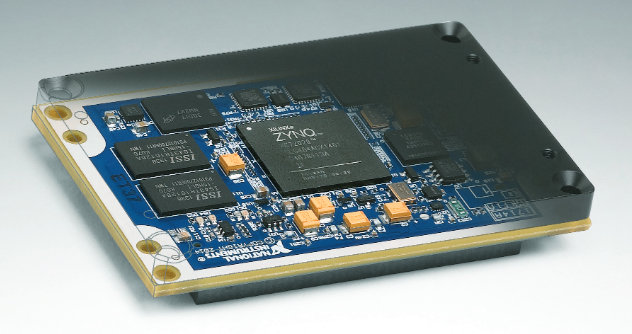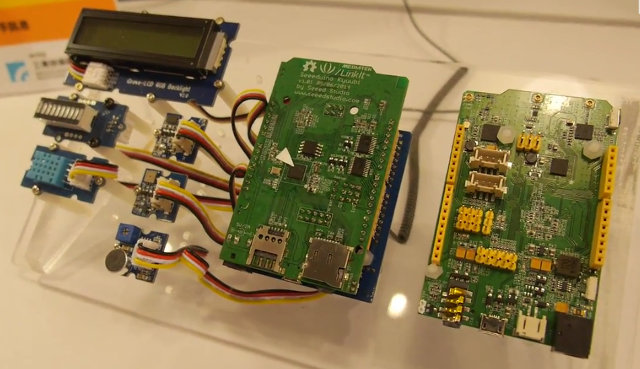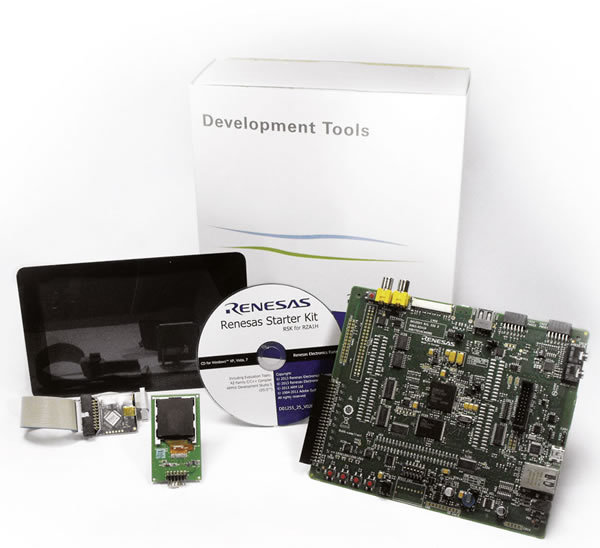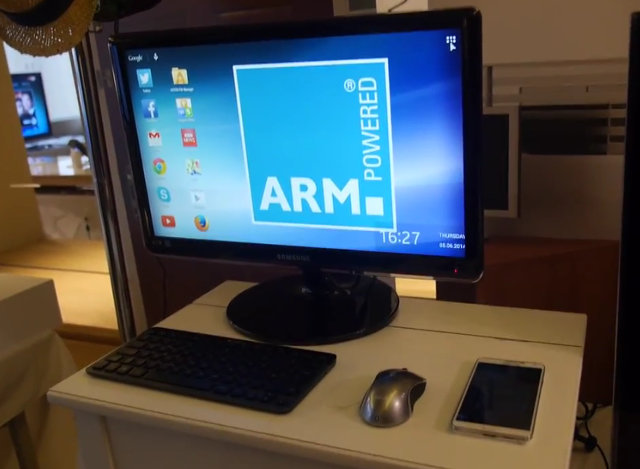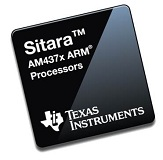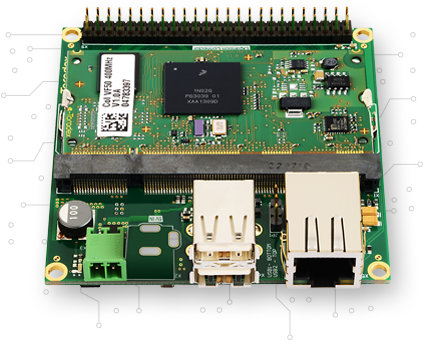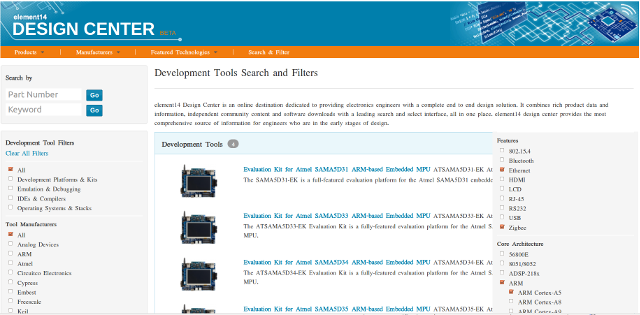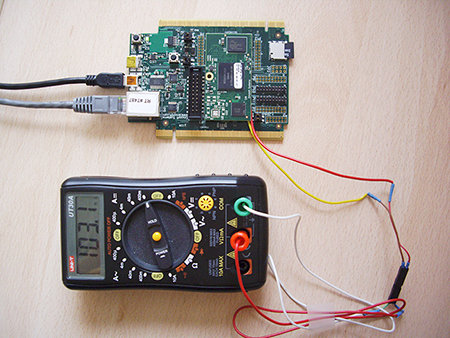National Instruments has recently announced NI sbRIO-9651 System on Module (SoM) powered by Xilinx Zynq-7020 dual core Cortex A9 + FPGA SoC, based on LabVIEW RIO architecture used in products such as myRIO, and coming with a complete middleware solution as well as NI Linux Real-Time OS. NI sbRIO-9651 hardware specifications: SoC – Xilinx Zynq-7020 with two ARM Cortex-A9 cores @ 667MHz and Artix-7 FPGA with 85K Logic Cells System Memory – 512MB DRAM Storage – 512MB flash Dedicated processor I/O: Gigabit Ethernet USB 2.0 Host, USB 2.0 Host/Device RS232 (TX/RX) SHDC FPGA I/O: 160 single-ended FPGA I/O Configurable peripherals: Gigabit Ethernet, 3x RS232, 2x RS485, 2x CAN Power Consumption – 3 to 5 Watts (typical) Dimensions – 50.8 x 78.2 mm Temperature range – -40 to 85 °C NI SoM is said to integrate a validated board support package (BSP) and device drivers with the MI Linux Real-time OS. […]
More Details on Mediatek MT2502 Aster SoC and Linkit Platform for Wearables (Video)
Last month, Mediatek announced their Mediatek MT2502 SoC for wearables, codenamed Aster, as well as the Linkit development platform targeting the developer’s community. But at the time they did show the actual hardware, and thanks to Charbax we know have more interesting details about Aster and Linkit. First they compare a design based on Aster to Samsung Galaxy Fit wearable band, and show why it uses less space, will cost less, and they claim over twice the battery life. Simple and smaller design (~36% reduction in size) Aster solution – MT2504 (6.2 x 5.4 mm) plus all required resistors, capacitors and inductors require 89.97 mm2 Galaxy Fit – MCU. Bluetooth Transceiver, external memory, a linear charger, and all required resistors, capacitors and inductors require 140.97 mm2 Battery life – Samsung Galaxy Fit is supposed to last between 1 and 1.5 days on a charge, whereas devices based on Aster should last about […]
Renesas RZ/A1H Starter Kit and Emtrion DIMM-RZ System-on-Module Run Segger embOS RTOS or Linux with 10MB SRAM
Announced just about a year ago, Renesas RZ/A1 ARM Cortex A9 processor family can be used for human machine interface applications, and has the particularly to embed large amount of SRAM, especially the RZ/A1H series with 10 MB SRAM which allows the development of some applications without external RAM chip, lowering both board size and BoM cost. I’ve just come across a development kit dubbed “RZ/A1H Starter Kit”, and the just released Emtrion DIMM-RZ system-on-module both powered by Renesas RZ/A1H SoC. Renesas RZ/A1H Starter Kit+ (RSK) The development kit includes the mainboard, a 7″ TFT LCD (Optional), a detachable Colour LCD Board Pmod Compatible,a detachable AD Adjustment Shaft, Segger J-LINK Lite debugger, various connection cables, a power supply, a Quick Start Guide, and a DVD-ROM with documentation, ARM DS-5 IDE (with 32K code limit), KPIT GNU compiler for Cortex A9, Segger debugger drivers. and sample code. The mainboard has the […]
Peek into the Smart Home of the Future with ARM Seamless Computing IoT Demo
We’ve seen lots of home automation being launched on crowdfunding platforms in the last year or so, and companies like Samsung, Archos, Google and Apple have launched, announced, or bought smart hone solutions. Recently ARM has hosted a demo for the smart home based on Cortex-M MCU mbed development boards, a single board computer gateway, and sensinode connected home software framework. Although some parts of the demo are unlikely to really have uses, e.g. you can look at the window to check the weather, I found the demo to be very interesting, especially with regards to the central role of the smartphone, and computing convergence. The list of different demos that can be seen in the video below is as follows: As you walk close to the main door, the system checks the weather, and if it rains, blinks a LED and emits a sound close to your umbrella, and […]
Texas Instruments Announces Sitara AM437x Cortex A9 SoCs and Evaluation Modules
The first time I heard about Texas Instruments Sitara AM437x was via a TechNexion EDM-CT-AM437x system-on-module back in 2012, but Texas Instruments Sitara Cortex A9 processors development seems to have dragged a little longer than expected. Nevertheless, the company has now formally announced their Sitara AM437x ARM Cortex A9 SoC targeting automation, IoT gateways, and other industrial applications, and featuring four PRUs (Programmable Real-time Units), and support for dual camera for terminals with bar code scanning. At launch there will be four AM437xprocessors: AM4376, AM4377, AM4378, and AM4379. The processors will all be based on a single Cortex A9 core @ 800 to 1000 MHz with 64KB SRAM shared with 32KB data cache and 32KB programmable cache, 256 KB L2 and L3 caches, a 32-bit memory interface supporting LPDDR2, DDR3, and DDR3L, a 2-port Gigabit Ethernet switch , two USB 2.0 OTG + PHY and the following other interfaces: Serial Ports […]
Toradex Customized Single Board Computers Powered by Freescale Vybrid and i.MX6 Sell for 39 Euros and Up
Toradex has launched what they call “Customized SBCs” (Single Board Computers) comprised of the usual carrier board an computer-on-module (CoM) combination, using their Apalis & Colibri families. The company offers various combination of Freescale i.MX6 and Vybrid VF50 single board computers, with price starting at 39 Euros for 1k order, or 49 Euros for samples. I’ve already featured Toradex Colibri VF50 (and VF61) modules in another post, but to summarize Colibri VF50 is a computer modules based on Freescale Vybrid VF50 ARM Cortex A5 CPU with 64 to 128MB DDR3, and 128MB NAND flash that targets industrial applications requiring long term availability (15 years). VF50 sells as low as 19 Euros per unit for 10k orders. Viola is a new open source hardware carrier board with the following features: Compatible with all Toradex Colibri CoMs External Storage – microSD interface Video – RGB LCD Interface, 4 wire resistive touch interface […]
Element14 Design Center Helps You find a Development Board and Tools for Your Project
Element14 has just launched a Design Center, currently in beta version, which let’s you do parametric searches for development kits, debuggers, software tools, by tools vendor, silicon manufacturers, board features, and processor architecture / type. So for example if you want to work on a low power Linux based gateway with Ethernet and Zigbee, you may search for a board with Ethernet and Zigbee, and comes with an ARM Cortex A5 processor. In this example, the website returned four SAMA5D3x evaluation kits from Atmel which support Ethernet, as well as Zigbee via an external module. Then if you want to find which tools are available from Atmel, you can select “Emulation and Debugging”, “IDE & Compiler”, and “Operating Systems & Stacks”, as well as “Atmel” and “ARM” core architecture which will return Atmel Studio 6, and a JTAG emulator. It’s not quite perfect, as the only features you can search […]
Low Power Mode (Suspend to RAM) in uCLinux for Freescale Kinetis K70 MCU
All ARM based micro-controllers and processors implement multiple power mode in order to save optimize power usage depending on the tasks. However, I’ve been told by some hobbyists/developers/makers that low power modes are not always implemented in Linux, especially for low cost systems either because of hardware limitations or the software is not implemented. EmCraft Systems has just released their latest embedded (uC-) Linux distributions for the MCU boards, and one of the features now available is “suspend to RAM” for their K70 SoM development kit, based on Freescale Kinetis K70 Cortex M4 MCU, which consume just around 600 to 700 uA @ 3.3V (2 to 2.3 mW) in this low power mode. They have connected a multimeter to measure the current drawn at different power modes. If you want to know all the details, you should probably read the company’s article on “Linux Low-Power Mode on Kinetis“, but I’ll […]


